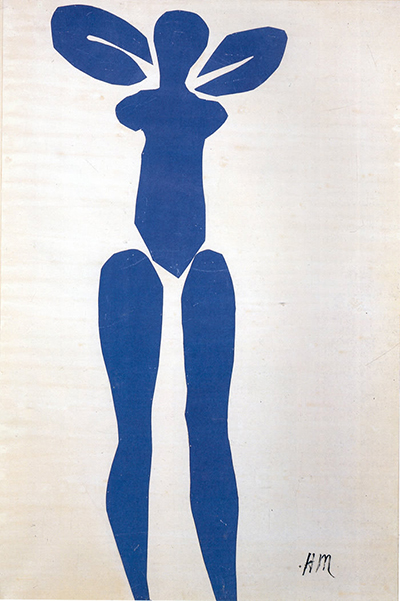This cut-out work re-captures similar poses from Matisse's time in Nice, several decades earlier. His cut-out techniques were well developed by the year, 1952, that Standing Blue Nude was completed.
It is immediately clear as to how Matisse put the various elements together, as he left small gaps between them. The main head and torso sit in the middle, surrounded either side by two curling arms. Long legs are then brought in below, cropped off at the bottom. His process was to experiment with different limbs until he was content with the final piece. At that point they would be attached more permanently. The original piece can now be found at the Metropolitan Museum of Art in the United States who actually categorise it in their collection as a drawing, rather than a painting. In truth, Matisse's cut outs sit somewhere in between these two mediums.
Whilst this page focuses specifically on Matisse's Standing Blue Nude painting, his overall Blue Nude series is covered elsewhere on this site. It remains one of the artist's main highlights and certainly the most significant contributions from late in his career, when his cut-out process dominated his output. Whilst simplicity was key to all of these artworks, he had studied form endlessly prior to beginning each of the items in this series. He found the process of painting and cutting to be ideally suited to working quickly, even though his health was far from ideal by this stage.




